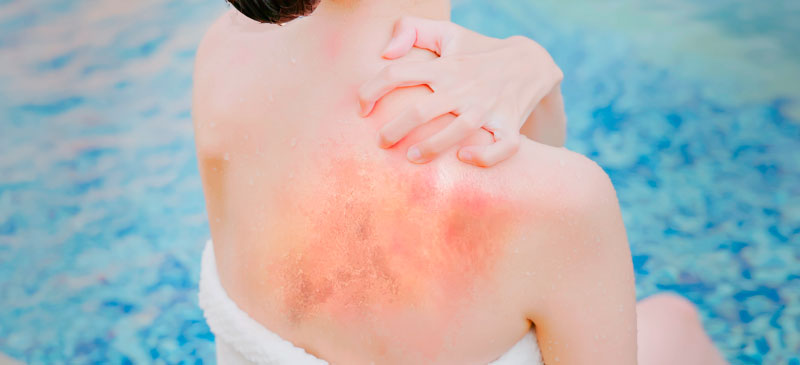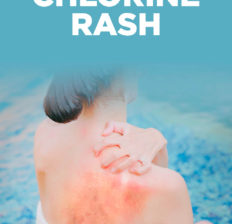This Dr. Axe content is medically reviewed or fact checked to ensure factually accurate information.
With strict editorial sourcing guidelines, we only link to academic research institutions, reputable media sites and, when research is available, medically peer-reviewed studies. Note that the numbers in parentheses (1, 2, etc.) are clickable links to these studies.
The information in our articles is NOT intended to replace a one-on-one relationship with a qualified health care professional and is not intended as medical advice.
This article is based on scientific evidence, written by experts and fact checked by our trained editorial staff. Note that the numbers in parentheses (1, 2, etc.) are clickable links to medically peer-reviewed studies.
Our team includes licensed nutritionists and dietitians, certified health education specialists, as well as certified strength and conditioning specialists, personal trainers and corrective exercise specialists. Our team aims to be not only thorough with its research, but also objective and unbiased.
The information in our articles is NOT intended to replace a one-on-one relationship with a qualified health care professional and is not intended as medical advice.
Chlorine Rash Symptoms, Causes, Treatment & Prevention
July 9, 2022

Have you ever wondered if swimming in pools treated with chlorine is bad for you? Chlorine might do a great job of killing bacteria in pools and hot tubs, but unfortunately, it’s pretty harsh toward your skin (and hair) — which is where chlorine rash comes in.
Because chlorine can zap moisture from skin and disrupt normal sebum (oil) production, a risk you take when swimming in some pools is the potential to develop an itchy, red chlorine rash.
What Is a Chlorine Rash?
As the name implies, a chlorine rash is a type of skin reaction caused by exposure to the chemical chlorine.
Most often it develops after someone has been swimming in a pool or soaking in a hot tub that’s been treated with chlorine. It can also occur if someone’s skin touches strong household cleaners, such as bleach products, which contain chlorine.
What is chlorine exactly? It’s a chemical element that’s used as a disinfectant, since it can kill microbes living in water. In fact, it’s one of the mostly highly produced and used chemicals in the United States.
It has a strong odor, which is why you can usually smell it when it’s used in high amounts. Not only can it irritate the skin, but it can also aggravate the eyes and the inside of the body, such as the nasal passageways, when it’s ingested or breathed in.
Chlorine Rash vs. Swimmer’s Itch:
Another type of skin condition that can develop after someone has been swimming outdoors is “swimmer’s itch,” a type of allergic response to pathogens that can live in fresh or salt water.
While a chlorine rash usually occurs after someone has spent time in a pool, swimmer’s itch usually develops after someone has been swimming in outdoor, fresh water.
Swimmer’s itch is usually caused by tiny parasites that make their way into water, such as lakes or ponds, from birds or other animals. The parasites lay larvae that can attach to people’s skin, burrow into the skin and cause an allergic rash.
Symptoms of swimmer’s itch usually include:
- Skin rash that looks like tiny red dots
- Tingling and pain
- Itching
- Sometimes lesions that blister, bleed and scab over
Symptoms
What does chlorine rash look like?
The main symptoms of a chlorine rash are:
- Dryness
- Redness
- Tenderness
- Inflammation
- Itchiness
- Skin lesions, hives, scales or crusts that form on the skin if the rash is severe
Usually a chlorine rash appears as dry, irritated skin, sometimes which is also red. Some people who are especially sensitive to chlorine also develop an itchy rash (hives) when exposed to it.
However, people who develop red or dry skin after being in a swimming pool are not actually allergic to chlorine. According to the American College of Allergy, Asthma & Immunology, “What you think is a chlorine allergy might actually be underlying asthma, exercise-induced bronchoconstriction (EIB) or bronchospasms …
“Chlorine may indirectly contribute to allergies by irritating and sensitizing the respiratory tract.”
How long does a rash from chlorine last?
In most cases the rash will develop within a few hours of the skin coming into contact with chlorine. Depending on how severe someone’s symptoms are, the rash might last one to four days. Normally it will clear up within about three days.
Causes
Dermatologists consider a chlorine rash to be a type of irritant dermatitis. The rash itself is actually caused by a minor chemical burn that dries out skin and causes inflammation.
The main contributor to the rash is hypochlorous acid, which is formed when chlorine and water are combined.
As one dermatologist explained to Prevention magazine, “This acid can open the pores, breaking down the skin’s natural oils and moisture barrier, causing dryness. The longer you stay in the water, the worse it gets.”
Some people who have allergies/asthma are more susceptible to severe chlorine rashes and other reactions, but chlorine is not an allergen itself.
Risk factors for developing a chlorine rash include:
- Having sensitive or already-dry or damaged skin, such as skin prone to eczema or other types of dermatitis.
- Spending lots of time in chlorinated water or being in chlorinated water for long periods. This applies to competitive swimmers, people who exercise in pools regularly and lifeguards.
- Not showering after being exposed to chlorine.
- Having allergies or asthma; chlorine irritates the sinuses, which may trigger the immune system to cause a rash.
How to Treat/Prevent
How do you get rid of chlorine rash? Follow the steps below to protect your skin from irritation and dryness:
1. Avoid Long Periods of Chlorine Exposure
Try not to spend more than about 30 minutes in any water that is treated with chlorine. If possible, avoid pools that have recently been treated with high concentrations of chlorine, such as to kill a potential pathogen found in the pool.
Indoor and public pools tend to be treated in greater concentrations than private pools at people’s homes. If you have a pool at home, consider switching to salt water, which can cut down on the amount of chlorine needed.
2. Apply Protective Balm to Skin Before Swimming
Some skin care products can help create a barrier on the skin that protects chemicals from being absorbed. The best types are Aquaphor or Vaseline (petroleum jelly), which help lower the amount of chlorine that can make its way into your pores.
Before swimming, apply a generous amount of these products to your skin where you’re most sensitive.
If you’re spending time outside in the sun and also want to protect your skin from a sunburn, first apply ointment/moisturizer to dry skin, and then apply sunscreen on top of it.
3. Wash Your Skin Before and After Being Exposed
Ideally, shower before and after you get in a pool that contains chlorine. Showering before will remove bacteria from your skin that can interact with chlorine in a way that makes rashes worse.
Showering after is important for removing the chlorine so it doesn’t sit on your skin for long periods. The longer it comes into contact with your skin, the worse your rash will likely be.
Try to shower off right after getting out of the pool/hot tub. Use a gentle and natural cleanser made for sensitive skin, such as one without any fragrances, exfoliants or acids.
4. Use Plenty of Moisturizer and Vitamin C
Right after showering, apply moisturizer to prevent dryness.
Generally, you want to prevent your skin from becoming too dry and flaky, which makes it more susceptible to rashes. Try exfoliating gently about twice per week, avoid using too many irritating products (such as acne treatments if your skin is already sensitive) and protect your skin from sunburns.
Look for moisturizers with ingredients such as ceramides, colloidal oatmeal and aloe. For the best results, slather it on right after washing your skin, which helps lock in the most moisture.
You can also add vitamin C serum to your skin care routine to further protect it from damage. Look for a thin vitamin C serum or lotion that can be applied under thicker moisturizers and sunscreens.
5. Apply Anti-itch Cream
If your rash is mostly mild and not itchy, then stick to the steps above. If you’ve developed a more severe rash that is red, itchy and pretty inflamed, try applying an over-the-counter hydrocortisone cream or a homemade anti-itch cream.
Do this for two to three days to see if the rash improves. If it doesn’t, visit your doctor for help.
When to See a Doctor
If you’ve developed a chlorine rash that doesn’t go away within several days after following the steps above, talk to your dermatologist or health care provider, who may suggest you use stronger anti-inflammatory creams.
Call your doctor right away if you develop a severe rash that is oozing, painful or very hot.
Avoid any further exposure to chlorine, sunlight or harsh skin care products while the rash heals.
Conclusion
- When your skin is exposed to the chemical chlorine you can develop a type of dermatitis that is basically a chemical burn. This is called a chlorine rash, and it usually affects people who swim in treated pools often or who have sensitive skin.
- Will a chlorine rash go away on its own? It probably will within a few days if it’s mild or moderate, but there are steps you can take to speed up the healing process.
- Wash your skin before and after being exposed to chlorine. Apply a protective ointment before swimming (under sunscreen), and then shower right after you get out of the pool/hot tub.
- Apply vitamin C and moisturizer to clean skin right away. Protect your skin from further irritation or burns.
- Visit your doctor if the rash is severe, painful and blistering.





